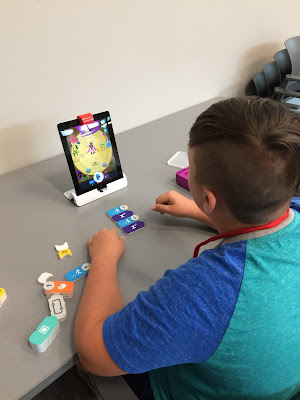I had considered a couple of other similar services, but what swayed me toward this one was that many people could participate at once. I only needed space for 12 participants (2 more than Google Hangouts allows), but FreeConferenceCalll allows for 1000 participants! That was just one of many things I liked. Here are some of the others:
- When someone is talking, they automatically move to the center of the screen. Other participants' video feeds (or placeholders for audio callers) move to the right.
- Screen sharing is so easy with the click of a button. Screen sharing also includes a drawing tool and the ability to switch presenters.
- The entire thing can be recorded for people who were unable to participate.
- The very simple dashboard includes common icons that make using the tool easy.
- The chat feature allows users to send responses to all participants or to certain ones. This feature was great for one of my participants who we couldn't hear.
- When the meeting is over, data is available about how long it lasted, how many people participated, and so on.
- It's free.
If you need a free way to connect with people and conduct a meeting or bridge classrooms or collaborate with faraway colleagues, FreeConferenceCall is one I would recommend. Check out their list of features here and the FAQs here.





